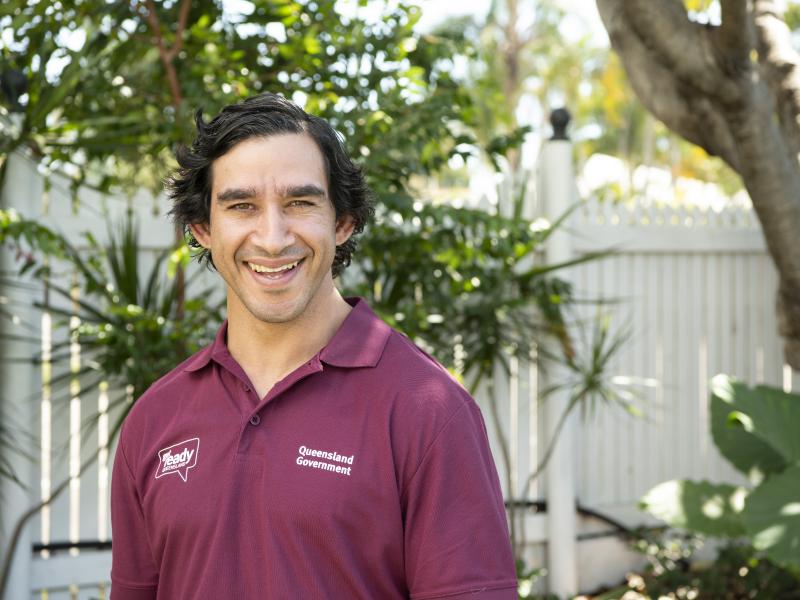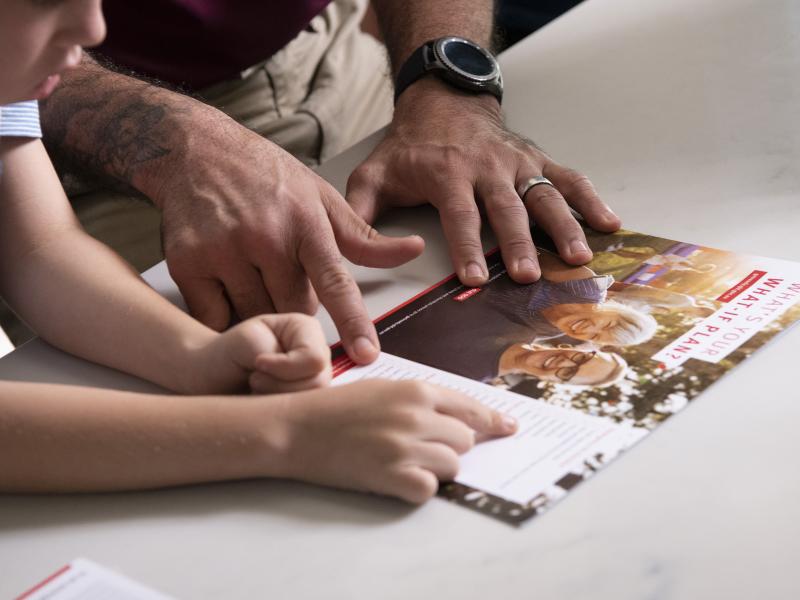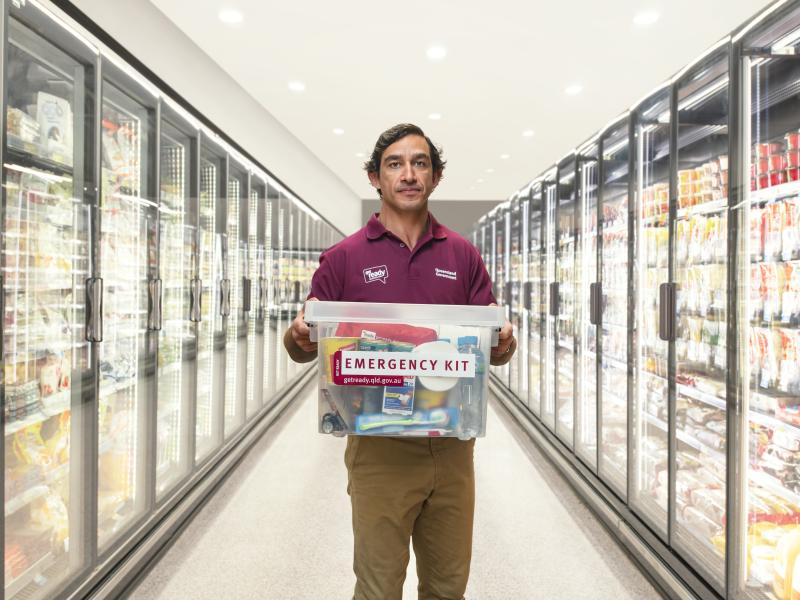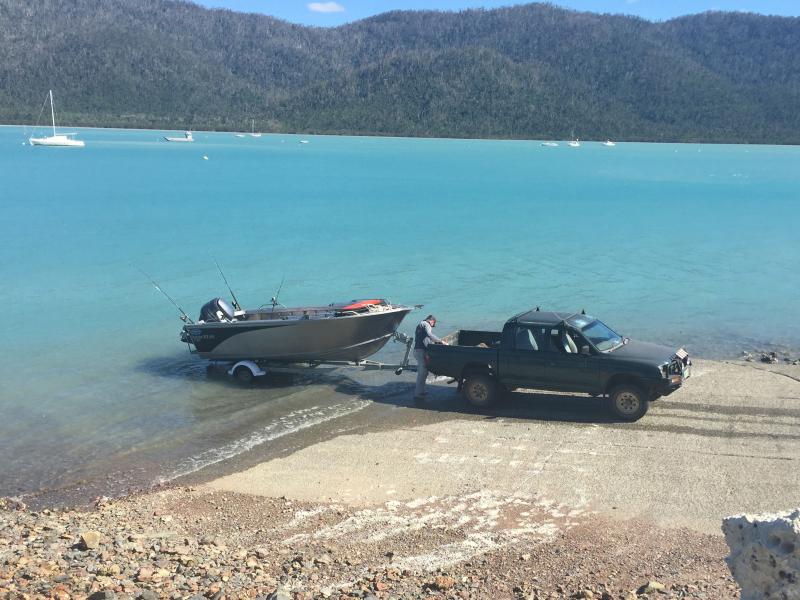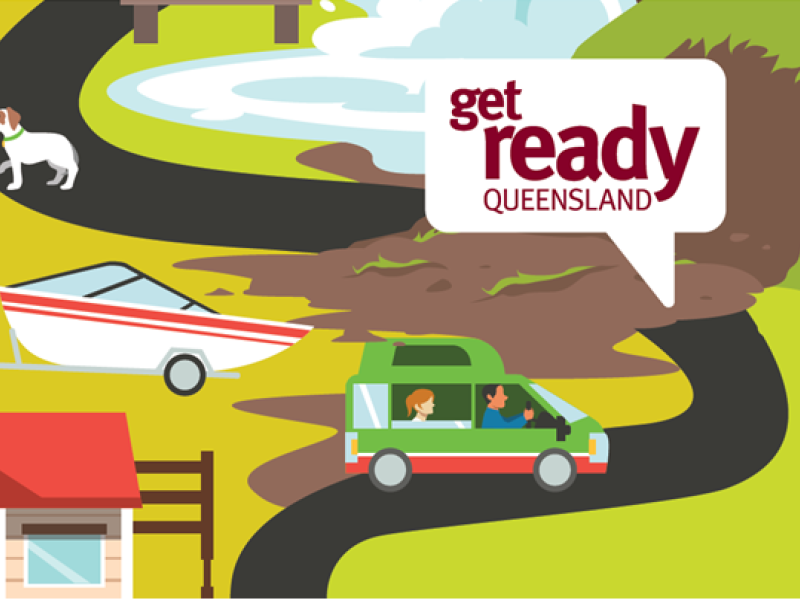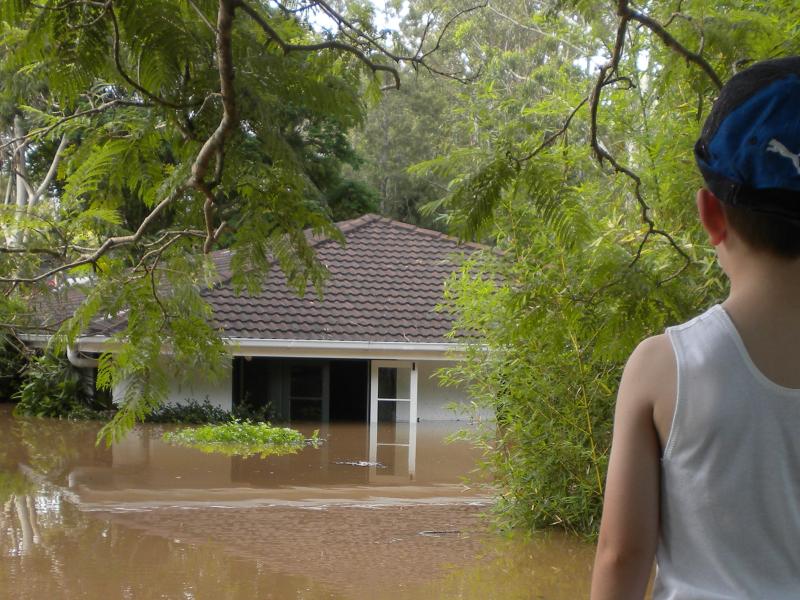If you’re hitting the road in Queensland - remember, it’s the most disaster-prone state in Australia, and conditions can change fast.
Before you set up camp, talk to local people for important information. You can ask staff at the service station when you stop for fuel or the campground operator. Find out about natural hazards in the area, such as bushfires, floods, or severe weather. Also, ask what you should do if there is a warning or emergency.
A little local knowledge goes a long way and helps keep your trip safe, stress-free and disaster-ready.
Heading off soon? Check out our Visitor Safety Tips before you go.
What to do if a severe weather warning has been issued:
If there is a bushfire or severe weather warning while you are camping or driving, follow these steps to protect your caravan and reduce damage.
Hover over the interactive dots below or expand the checklist to find out how.
Alternatively, the following checklist is also available in the Get Ready Queensland Protection while you are out and about booklet (PDF, 1.21MB) which is available to download.
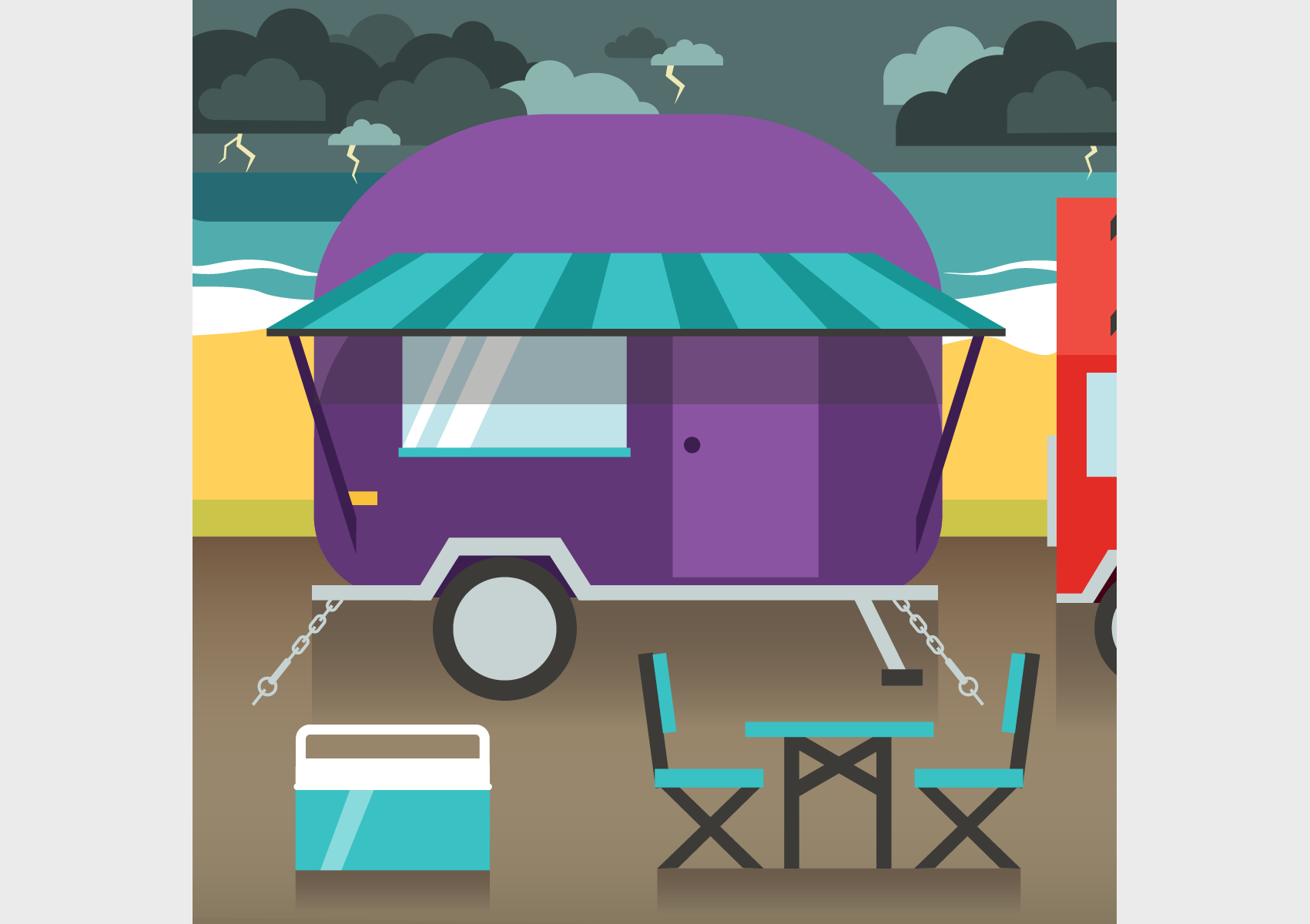
When parking or relocating your caravan when severe weather warnings have been issued, ensure you park with the narrow end facing the wind, park out of the way of trees that might fall and be mindful of any areas that may flood during a storm.

Apply the brakes and chock the wheels.

Take your awning down as soon as possible.

If there are no anchor points, dig holes under your caravan wheel to increase wind resistance, sink posts of angle iron at the tyre corners. Caravan parks in high-wind areas usually provide ground anchor points. If there is an anchor point, you should tie down your chassis with either short lengths of strong chain and turnbuckles or sound rope of at least 9.5mm diameter. If there are no anchor points, you should use nylon rope or steel cable anchored at ground level and attached to the caravan chassis.

Tie down your roof - the most effective roof tie-down is a strong net firmly fixed at ground level and passing over the full length of the caravan.

Put all your equipment inside the caravan, including your annex, bikes, chairs, household items.

In addition, if storm surge or flood warnings are issued, unplug all electrical devices and place them on a higher level rather than on the floor to prevent them from getting wet, switch all gas supplies off.

Even if your caravan is securely tied down, you should seek other shelter when warned of approaching high winds.

When exploring the wilderness, be prepared for bushfires and wildfires. To protect your caravan from fire, install a smoke and carbon monoxide detector in your rig for an added safety measure and keep a fire extinguisher near the door inside the caravan.

When parking or relocating your caravan when severe weather warnings have been issued, ensure you park with the narrow end facing the wind, park out of the way of trees that might fall and be mindful of any areas that may flood during a storm.

Apply the brakes and chock the wheels.

Take your awning down as soon as possible.

If there are no anchor points, dig holes under your caravan wheel to increase wind resistance, sink posts of angle iron at the tyre corners. Caravan parks in high-wind areas usually provide ground anchor points. If there is an anchor point, you should tie down your chassis with either short lengths of strong chain and turnbuckles or sound rope of at least 9.5mm diameter. If there are no anchor points, you should use nylon rope or steel cable anchored at ground level and attached to the caravan chassis.

Tie down your roof - the most effective roof tie-down is a strong net firmly fixed at ground level and passing over the full length of the caravan.

Put all your equipment inside the caravan, including your annex, bikes, chairs, household items.

In addition, if storm surge or flood warnings are issued, unplug all electrical devices and place them on a higher level rather than on the floor to prevent them from getting wet, switch all gas supplies off.

Even if your caravan is securely tied down, you should seek other shelter when warned of approaching high winds.

When exploring the wilderness, be prepared for bushfires and wildfires. To protect your caravan from fire, install a smoke and carbon monoxide detector in your rig for an added safety measure and keep a fire extinguisher near the door inside the caravan.

When parking or relocating your caravan when severe weather warnings have been issued, ensure you park with the narrow end facing the wind, park out of the way of trees that might fall and be mindful of any areas that may flood during a storm.

Apply the brakes and chock the wheels.

Take your awning down as soon as possible.

If there are no anchor points, dig holes under your caravan wheel to increase wind resistance, sink posts of angle iron at the tyre corners. Caravan parks in high-wind areas usually provide ground anchor points. If there is an anchor point, you should tie down your chassis with either short lengths of strong chain and turnbuckles or sound rope of at least 9.5mm diameter. If there are no anchor points, you should use nylon rope or steel cable anchored at ground level and attached to the caravan chassis.

Tie down your roof - the most effective roof tie-down is a strong net firmly fixed at ground level and passing over the full length of the caravan.

Put all your equipment inside the caravan, including your annex, bikes, chairs, household items.

In addition, if storm surge or flood warnings are issued, unplug all electrical devices and place them on a higher level rather than on the floor to prevent them from getting wet, switch all gas supplies off.

Even if your caravan is securely tied down, you should seek other shelter when warned of approaching high winds.

When exploring the wilderness, be prepared for bushfires and wildfires. To protect your caravan from fire, install a smoke and carbon monoxide detector in your rig for an added safety measure and keep a fire extinguisher near the door inside the caravan.

Protecting your family and travelling companions
In addition to protecting your caravan, you also need to complete three steps before you leave home to protect your family and other travelling companions should you encounter a natural disaster on your holiday.
Get Ready in 3 steps:
Find out more and Get Ready
Check out these other pages and resources to help you Get Ready.
